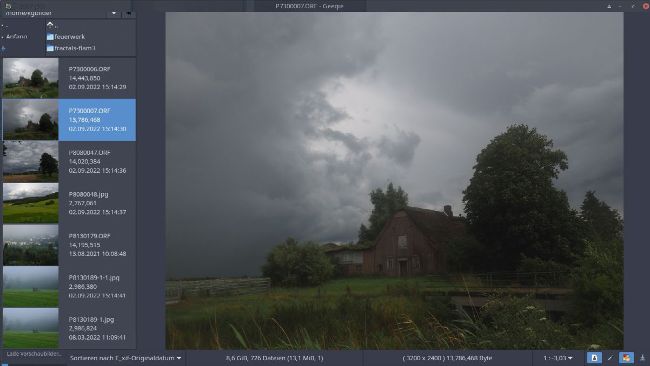RAW photography
Open source RAW photography
Linux offers all the pro-level tools you could possibly need for better photos. Karsten Günther is your top-tips guide.

Plasticity, radiant highlights and precise control of lighting effects in this way are really only possible with RAW photography.
Professional photographers only use RAW photos when they’re working on highquality images. But why and what for? How much extra effort do RAW photos entail, and is it worth it for hobbyist photographers? Let’s answer those questions here…
The good news is that Linux users are in an enviable situation: some of the best programs for managing and processing RAW photos are developed under Linux and only occasionally ported to other platforms. On the other hand, RAW photography itself is considered time-consuming and labour-intensive. Nevertheless, three weighty reasons speak in favour of dealing with the subject and taking RAW photos:
•
For landscape photography, good illumination must be achieved across all tonal values, especially in difficult lighting conditions; both the sky should have structure, as well as the shadows in the foreground.
• With portraits, the overly smooth automatic mode is deactivated, resulting in more realistic, vivid images.
• HDR images can be created from one RAW photo, which often leads to results really worth seeing.
We’re going to take you through a RAW workflow, looking at the tools available for each stage, from reviewing to converting and editing.
QUICK TIP
For large image collections, DigiKam’s filter functions are extremely useful. In the left sidebar, you can search for times, keywords, geolocations and similarities; search provides access to all EXIF tags. In the right sidebar, Filter offers additional options.
Reviewing
Before converting the RAW images, they should be reviewed. Two programs are particularly suitable for this. Geeqie (www.geeqie.org) is excellent for quickly viewing images and sorting out blurred or otherwise unsatisfactory photos. Such photos can be deleted with Geeqie or moved to an appropriate folder. Geeqie only shows the preview images embedded in RAW images, not the RAW data.
Alternatively and complementary, DigiKam (www. digikam.org) is the program for managing images under Linux. It reads virtually all RAW formats, evaluates the EXIF tags stored in the images and uses them for automatic management. In addition, keywords can be assigned to photos, directory hierarchies can be created, pictures can be renamed, and much more. (A simple RAW converter and image editor are also part of DigiKam, but they are not comparable with the other programs presented here.)

Geeqie is powerful and intuitive when displaying RAW files, although the program was actually developed for displaying bitmap images.
Image credit: Karsten Günther, Geeqie